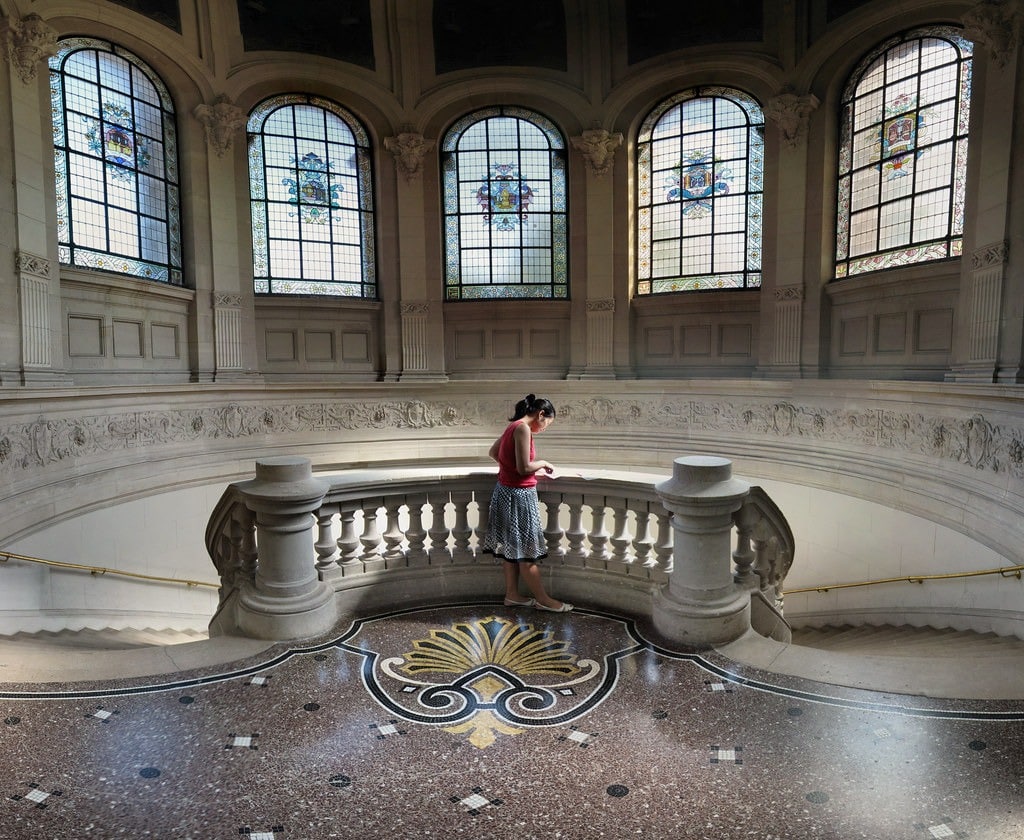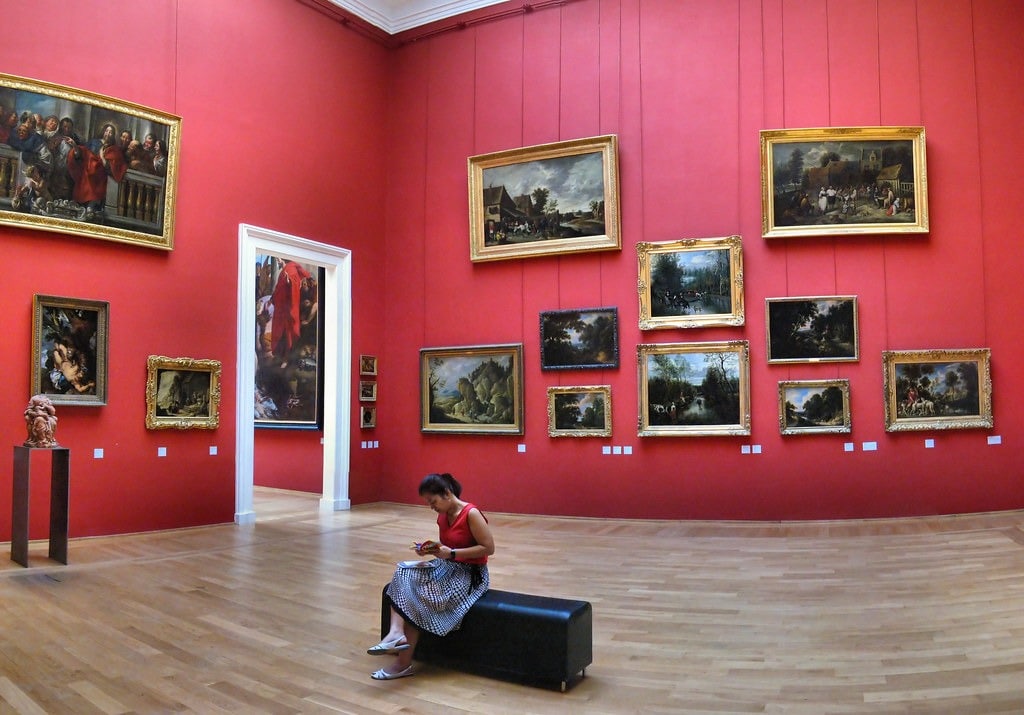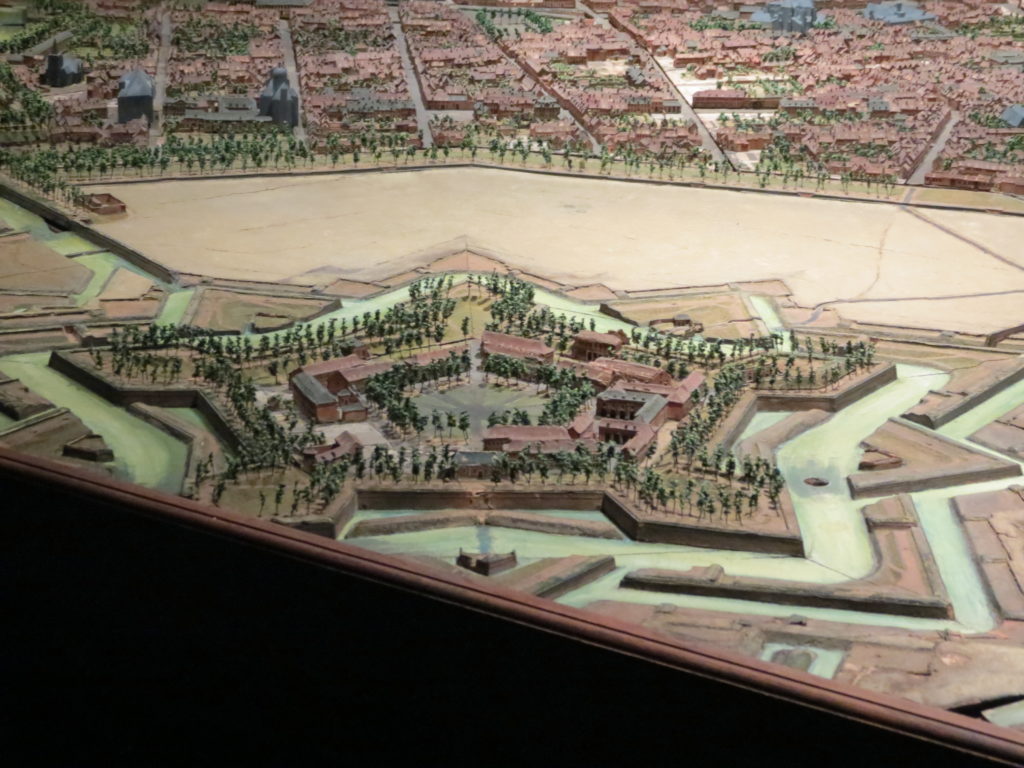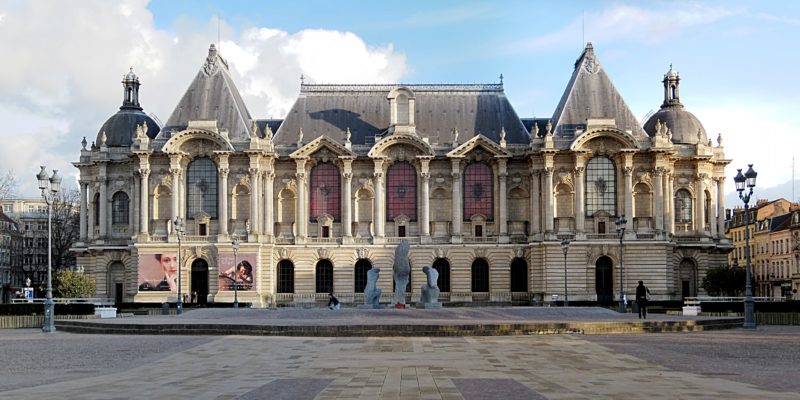Located in the heart of the charming city of Lille, the Palais des Beaux-Arts is one of France’s largest and most visited museums. It is considered the second largest general museum in France after the Louvre. It’s a real gem of French heritage, and a must-see for all art and history lovers.
A little history
The birth of Lille’s Palais des Beaux-Arts is closely linked to French history, and in particular to the Napoleonic era.
It was in 1801, following a decree by Napoleon Bonaparte, that the museum project took root. In his desire to democratize art and make it accessible to all, Napoleon ordered the creation of 15 provincial museums. Lille, being one of France’s major cities, was naturally included in this ambitious project. However, the project was delayed for a variety of political and economic reasons.
It wasn’t until 1835 that the city of Lille acquired a plot of land on the Place de la République to build the museum. Construction of the Palais des Beaux-Arts took several years, and the building was finally inaugurated in 1892, almost a century after the original Napoleonic decree. The inauguration was a major event in Lille’s cultural life, marking the city’s determination to position itself as a major cultural hub in France. Over the years, the Palais des Beaux-Arts has undergone a number of renovations and extensions to adapt to changing collections and visitor needs.
In 1997, the museum underwent a complete overhaul to modernize its facilities and improve visitor reception. Today, the Palais des Beaux-Arts de Lille is not only a testimony to the history of art, but also a historic monument that tells part of the story of France. 
The Museum Collections
Lille’s Palais des Beaux-Arts houses an exceptional collection of works of art, whose diversity and quality testify to the importance of its role as a general museum.
Painting and Sculpture
Lille’s Palais des Beaux-Arts is particularly renowned for its exceptional collections of paintings and sculptures, spanning a broad period from the Middle Ages to the first half of the 20th century. These collections offer a unique insight into the evolution of European art over the centuries. The museum’s painting collection is one of the largest and most varied in France. It includes works by great masters of different periods and artistic schools.
These include works by Flemish and Dutch masters such as Rubens and Van Dyck, whose paintings are renowned for their richness of color and mastery of chiaroscuro. The museum also boasts works by Delacroix and Courbet, two emblematic figures of 19th-century French art. Delacroix, known for his dramatic use of color, is represented by several major works. Courbet, the central figure of realism, is also well represented. The collection would not be complete without works by Goya, the famous Spanish painter. His paintings, marked by their raw realism and social criticism, add a further dimension to the museum’s collection. The Palais des Beaux-Arts de Lille’s sculpture collection is equally impressive.
The museum presents a variety of sculptures in marble, bronze and terracotta, some of them of monumental size.
Visitors can admire works by Rodin, the master of modern sculpture, whose expressive, dynamic figures revolutionized the art of sculpture. Other notable sculptors in the collection include Carpeaux and Bourdelle, both of whom contributed to the art of sculpture with their unique and innovative styles. 
Decorative Arts and Ceramics
In addition to its painting and sculpture collections, Lille’s Palais des Beaux-Arts houses a remarkable collection of decorative arts and ceramics. Covering a period from the 17th to the 20th century, this collection highlights the evolution of craftsmanship and design through the centuries. The museum’s decorative arts collection includes a wide range of objets d’art, from furniture and tapestries to precious objets d’art. The furniture, ranging from Louis XIV to Art Deco, bears witness to the evolution of design and taste through the centuries. Tapestries, meanwhile, illustrate the art of tapestry-making in France and Europe, with pieces ranging from the Middle Ages to the modern era.
Precious objets d’art, such as clocks, jewelry boxes and vases, are also an important part of the collection, reflecting the craftsmanship of different eras and regions.
The Palais des Beaux-Arts de Lille’s ceramics collection is equally impressive. It includes a variety of pieces from different eras and regions, highlighting the diversity and richness of the art of ceramics. The porcelains of Sèvres and Chantilly, for example, bear precious witness to the art of porcelain-making in 18th-century France. These pieces, renowned for their finesse and refined decoration, represent the pinnacle of porcelain art at the time. The collection also includes Delft earthenware, renowned for its characteristic blue and white glaze. These earthenwares, produced in the Netherlands from the 17th century onwards, are an outstanding example of the art of ceramics in Northern Europe.
Plans-Reliefs
One of the special features of the Palais des Beaux-Arts in Lille is undoubtedly its relief models. These models of fortified towns, produced with impressive precision and attention to detail, are a valuable historical and artistic heritage. Plans-reliefs were originally commissioned by King Louis XIV and his Minister of War, Louvois, in the 17th century. Their purpose was purely military: they were used to prepare defense and attack strategies for the wars of the time. These models offered an overall view of the topography of towns, their fortifications and their main buildings, enabling them to anticipate enemy movements.
The museum’s collection of plan-reliefs includes 14 of these models, each representing a different city.
The most impressive of these is undoubtedly that of Lille, the largest ever built. Measuring almost 40 square meters, this model depicts the city as it was in the 18th century, with its ramparts, bastions and winding streets. The accuracy of the model is such that you can even make out the trees in the gardens and the tiles on the roofs.

Relief map of the city of Lille
Museum location
X.R.
